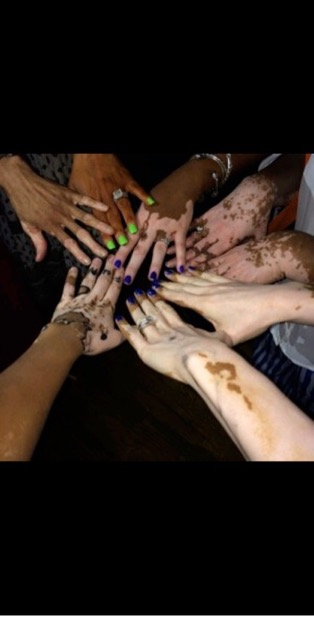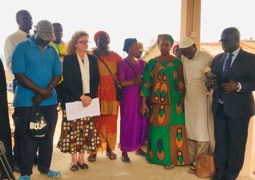
Similarly, Vitiligo is a disease that causes loss of skin color in patches. The discolored areas usually get bigger with time. The condition can affect the skin on any part of the body. It can also affect hair and the inside of the mouth.
In an interview, Buba Jammeh, an adult who is suffering from Vitiligo, explained that he faces discrimination, judged, stigmatized and bullied by the society due to his skin condition.
Normally, the color of hair and skin is determined by melanin. According to experts, Vitiligo occurs when cells that produce melanin die or stop functioning. Vitiligo affects people of all skin types, but it may be more noticeable in people with brown or Black skin. However, the condition is not life-threatening or contagious.
For Jammeh, the discrimination patients’ face in society is more disheartening than the illness itself.
“My skin was normal growing up like every other person till late 2009, when I started observing white patches on my skin. This goes to everyone dealing with the illness. I do not generate pain from the illness, but the way society looks at you when you are with this disease shows how discriminative minded they can be and this can make one lose confidence in oneself which can result to other serious emotional challenges like trauma, depression among others.” he said.
Explaining further, Jammeh indicated how he got to know he had Vitiligo.
“Discovering white patches on my skin, was very confusing because I didn’t know what it was. I was then asked to go see a medical personnel and upon diagnosed, I was informed that I have Vitiligo. This made me scared, confused and devastated. I also went through so many tests to ascertain the cause of the disease but I was informed that it is still unknown even though scientists are still researching about it. I was advised to see a Dermatologist; a specialist that deals with people with skin conditions and a Counselor but none of these helped the skin patching.” he said.
“I went through so many traditional treatments in the hope of finding a cure, hence the medical way was not helping. The process of taking traditional treatment almost lead to other consequences because I nearly died after taking a certain herb. This particular herb made me vomit blood, till then I stopped and I started realizing what the doctors told me.”
He urged people suffering from the disease to come out and be part of their association that was officially launched on 25 June 2022 in commemoration of the World Vitiligo Day at the Westfield Youth Monument.
Jammeh equally thanked his family and friends for ‘the support and encouragement they gave me.’
Pa Siaka Sanneh, who has been living with Vitiligo for over 30 years, said it is not and has never been a easy journey.
“I have gone through many treatments as well that still leave with side effects and it is not because I have Vitiligo, but because I want to look normal again like everybody else.”
Research has shown Vitiligo can start at any age, but usually appears before age 30. And has no cure. But treatment might stop or slow the discoloring process and return some color to the skin.
It further showed people with Vitiligo may be at increased risk of: Social or psychological distress, Sunburn, Eye problems, Hearing loss.
Lamin Sambou, from the Ministry of Health, urged people to desist from traumatising and stigmatising people with the strange ailments.
Read Other Articles In National News





